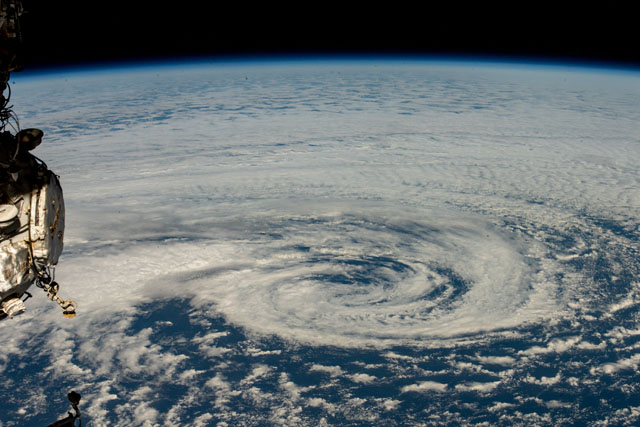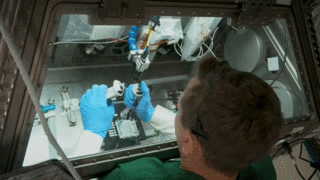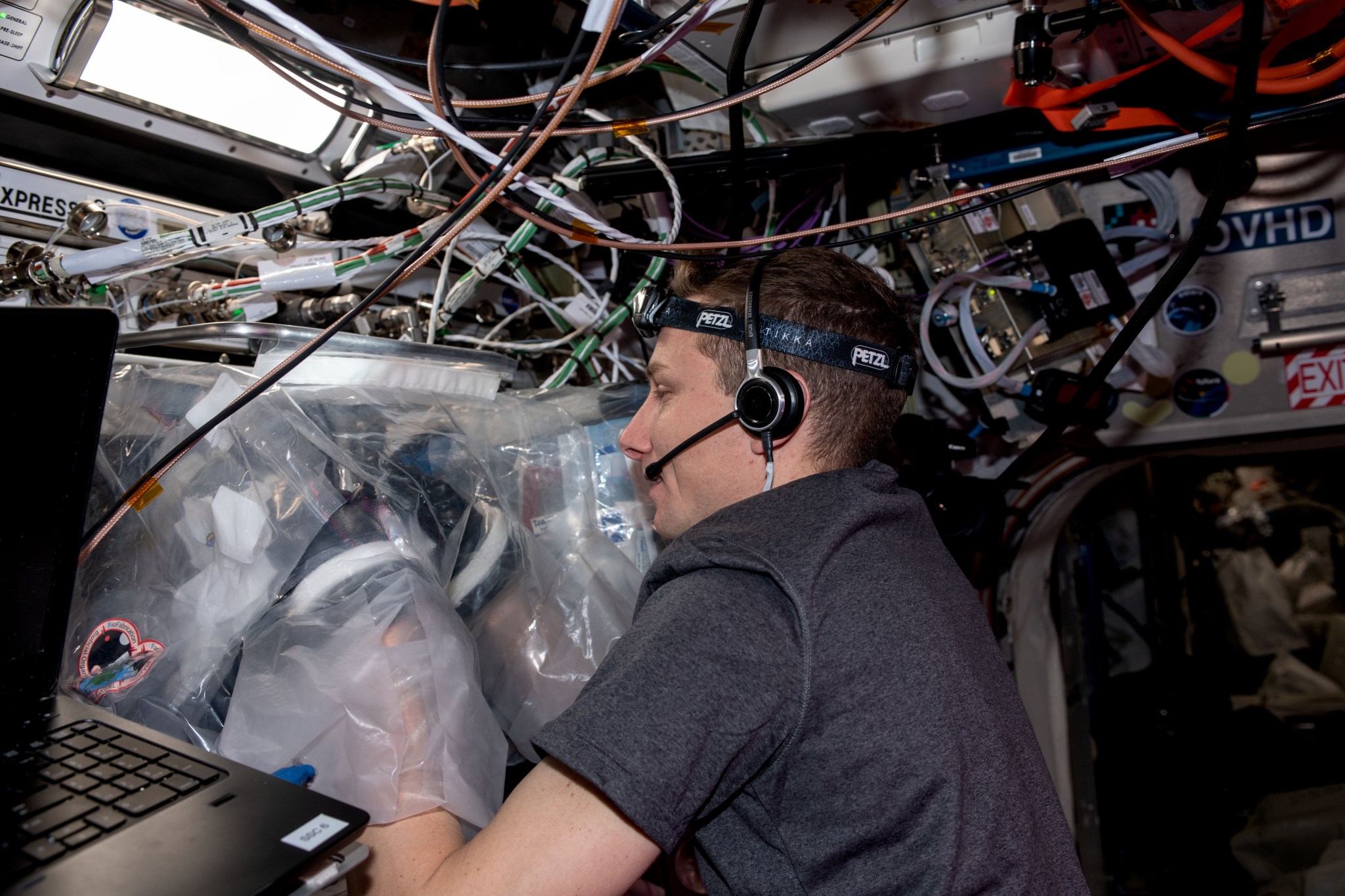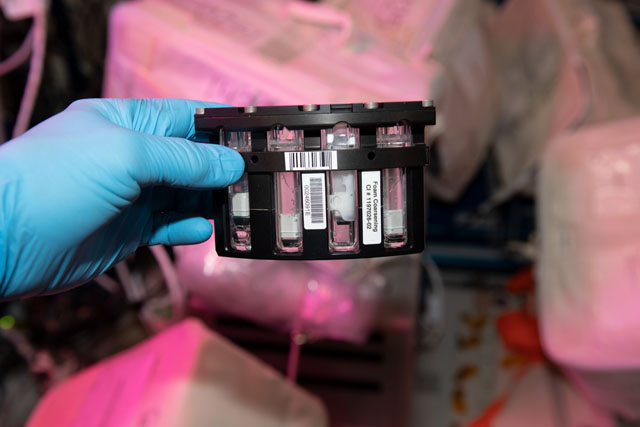Crew members aboard the International Space Station conducted scientific investigations during the week of March 27

Lee esta historia en español aquí.
Crew members aboard the International Space Station conducted scientific investigations during the week of March 27 that included studying how cardiovascular and respiratory adaptations to space affect blood pressure regulation, analyzing fluid flow through membranes in microgravity, and evaluating in-space bioprinting of knee cartilage tissue.
Here are details on some of the microgravity investigations currently taking place aboard the orbiting lab:
Under Pressure
Changes that astronauts experience in their cardiovascular and respiratory systems during spaceflight can affect their ability to maintain adequate blood pressure when standing after return to Earth. CARDIOBREATH, an investigation from CSA (Canadian Space Agency), studies how cardiovascular and respiratory adaptations to spaceflight affect blood pressure regulation. Results could provide a better understanding of the mechanisms of these adaptations and support development of ways to assess cardiovascular and respiratory effects on blood pressure before and after spaceflight. These changes parallel many associated with aging and this research could contribute to better health care and improved quality of life for the elderly on Earth. During the week, crew members wore the bio-monitor during multiple exercise sessions for the investigation.
Making Medicines in Microgravity

Ampli Space Pharmacy, sponsored by the ISS National Lab, studies the chemical reactions of fluids flowing through membranes in microgravity. Results could lead to a better understanding of how microgravity affects this fluid flow and could support development of a lightweight, passive, modular platform for producing pharmaceuticals. Crews could use such a platform to create medications on future space missions, freeing up cargo space used to store a supply of drugs that the crew may never use. Such a tool also could provide medicines to those in isolated or underdeveloped areas on Earth. Crew members performed sample operations for the investigation during the week.
Custom Cartilage Capabilities

BFF-Meniscus-2 evaluates using the station’s BioFabrication Facility (BFF) to 3D print a meniscus-like construct, similar to knee cartilage tissue, and assess its mechanical properties compared to one bioprinted on Earth. Musculoskeletal injuries, including tears in the meniscus, are a leading health issue in the U.S. military, and the capability to bioprint tissue such as knee cartilage also could benefit crew members who experience musculoskeletal injuries on future missions. Demonstration of further capabilities for tissue fabrication in space also supports continued and expanded commercial use of the space station as a facility for tissues and organs that are needed for transplant on the ground. The investigation is sponsored by the ISS National Lab. During the week, crew members inserted tissue cassettes for printing operations.
Other Investigations Involving the Crew:

- Vascular Aging, an investigation from CSA, monitors changes to the arteries of astronauts during spaceflight. Results could help assess risk to astronaut health and point to mechanisms for reducing that risk and provide insight into prevention and treatment for the aging population on Earth.
- Engineered Heart Tissues-02, sponsored by the ISS National Lab, assesses human cardiac function in microgravity and tests new therapies to prevent potentially harmful changes that can occur during spaceflight. Results could help protect crew members on future missions and support diagnosis and treatment of cardiac dysfunction on Earth.
- Rhodium DARPA Biomanufacturing 01 sponsored by the ISS National Lab, examines gravity’s effect on production of drugs and nutrients from bacteria and yeast. Results could help improve biomanufacturing in space to supply future missions.
- Cardinal Heart 2.0, sponsored by the ISS National Lab, tests drugs to reduce changes in heart cell function in space. Results could support development of effective drug combinations to improve the health of astronauts and patients on Earth.
- Foam Coarsening, an investigation from ESA (European Space Agency), investigates bubble size and arrangement dynamics for wet foams, which have potential applications such as firefighting and water cleaning systems in space and in industry on the ground.
- ISS Ham Radio provides students, teachers, and others the opportunity to communicate with astronauts using amateur radio units. Before a scheduled call, students learn about the station, radio waves, and other topics, and prepare a list of questions based on the topics they have researched.
John Love, ISS Research Planning Integration Scientist
Expedition 69





























